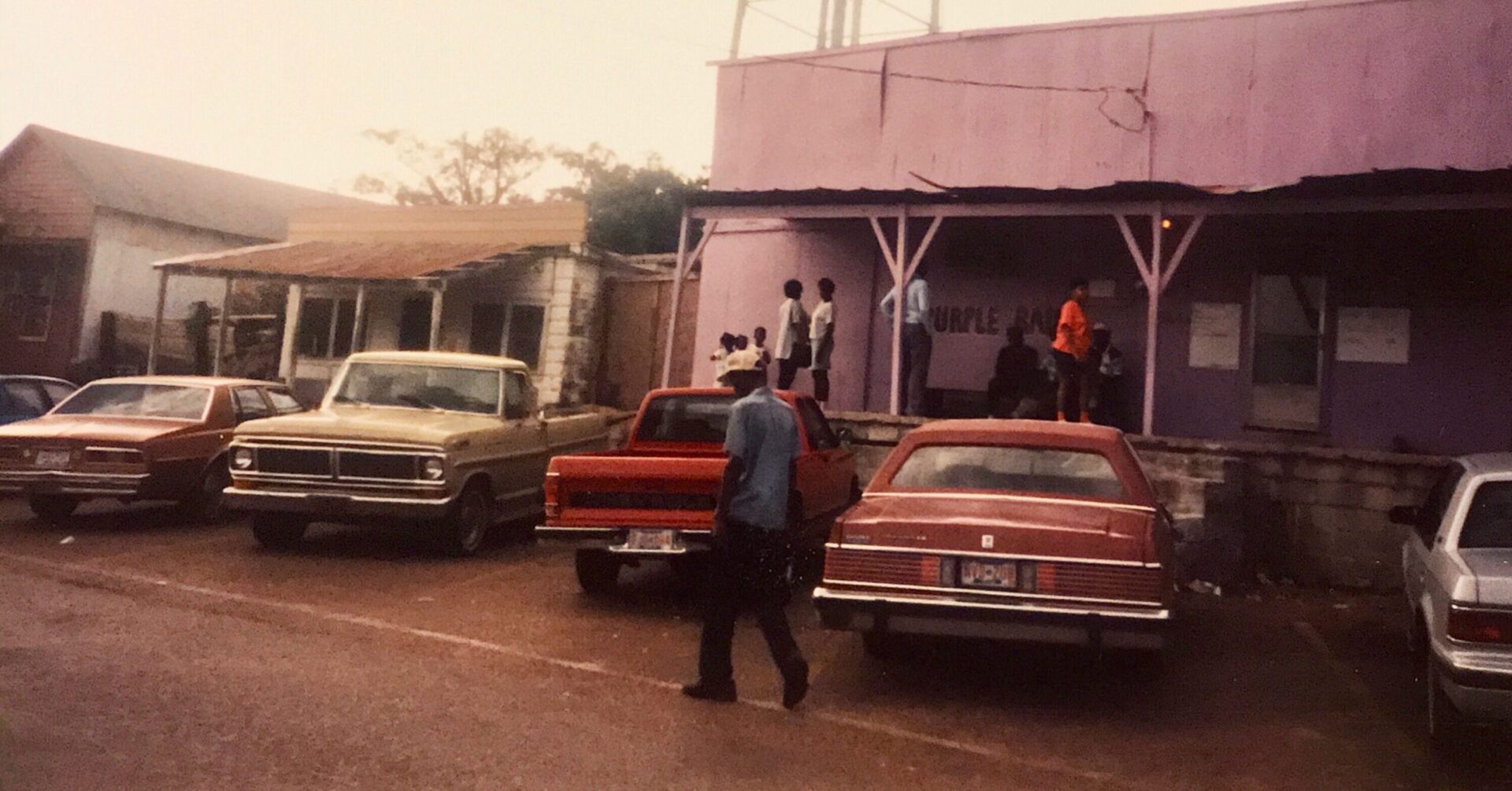








































































































































The traditional Mardi Gras parades can be fun, but my favorite part of carnival is in the ‘hoods and backstreets, where the gangs of Mardi Gras Indians appear in their elaborate costumes, beating drums, chanting and marching through the streets. Despite an ostensibly First Nations frame of reference, the Indians, who call their organizations “gangs” rather than “tribes”, seem far more an American reading of an African tradition, or perhaps one from the Caribbean. There are both “uptown” gangs and “downtown” gangs, as this is the broad division that once defined the difference between “Creoles” and “American Blacks,” but on this particular Mardi Gras Day, all of the gangs I saw were from Uptown, even the Black Flame Hunters which I encountered downtown under the I-10 bridge on North Claiborne Avenue.
My homeboy Darren Towns went with me briefly as I went to encounter the Indians, even though he didn’t particularly want to. Like a lot of Black New Orleanians I have met, he didn’t particularly want to see the Indians, as he remembered seeing someone’s head get split open one Mardi Gras Day when they didn’t get out of the way of a gang that was coming. Fear of violence seems to be the main reason for negative views of the gangs, even though violence in the Indian subculture has been decreasing steadily since the 1950’s. Nowadays, the bulk of the battles are ritual confrontations that consist of dancing and drumming in known places where the tribes meet, such as Second and Dryades, an uptown corner which is important to the Indian tradition. One bar on the corner, the Sportsman’s Lounge, is the headquarters for the gang known as the Wild Magnolias. Behind it is a large brick building called Handa Wanda, where I attended my first Indian practice ever a few years ago.
The gangs are accompanied by drummers, generally playing bass drums, or occasionally tenor drums, and tambourines are also used. After beginning their day with a “ritual prayer” called “My Indian Red”, the gang may run through a number of call-and-response chants, such as “Shallow Water O Mama”, “Shoo Fly, Don’t Bother Me”, “They (or Somebody) Got To Sew, Sew, Sew”, “Get the Hell Out The Way” or “Two Way Pocky Way.” The Big Chief may engage in a considerable amount of boasting and bragging, some of which may include words from an “Indian language” that might include French, Spanish, Creole or African terms. The drumming, chanting and brilliant-colored costumes all create an atmosphere that is quite reminiscent of the Caribbean, and unlike anything elsewhere in America. The men in these tribes will wear their elaborate outfits only twice more this year, once on St. Joseph’s Night in March, and once again during uptown or downtown events called Super Sundays that occur toward the end of March. In the past the suits would have been burned, but a number of them have ended up in museums nowadays, which is quite appropriate, as they are intricate works of art. At the end of the day, I was quite tired, and when I caught back up with Darren and his wife and kids, we decided to head uptown to Pizza Domenica, which we knew was open from previous years. It was crowded, but we managed to get in, and enjoyed some delicious pizza there, before heading out to City Park for coffee and beignets at Morning Call. It was truly a Mardi Gras for the ages.
Founded 1963 Relaunched 2019. The Postmodern South.
